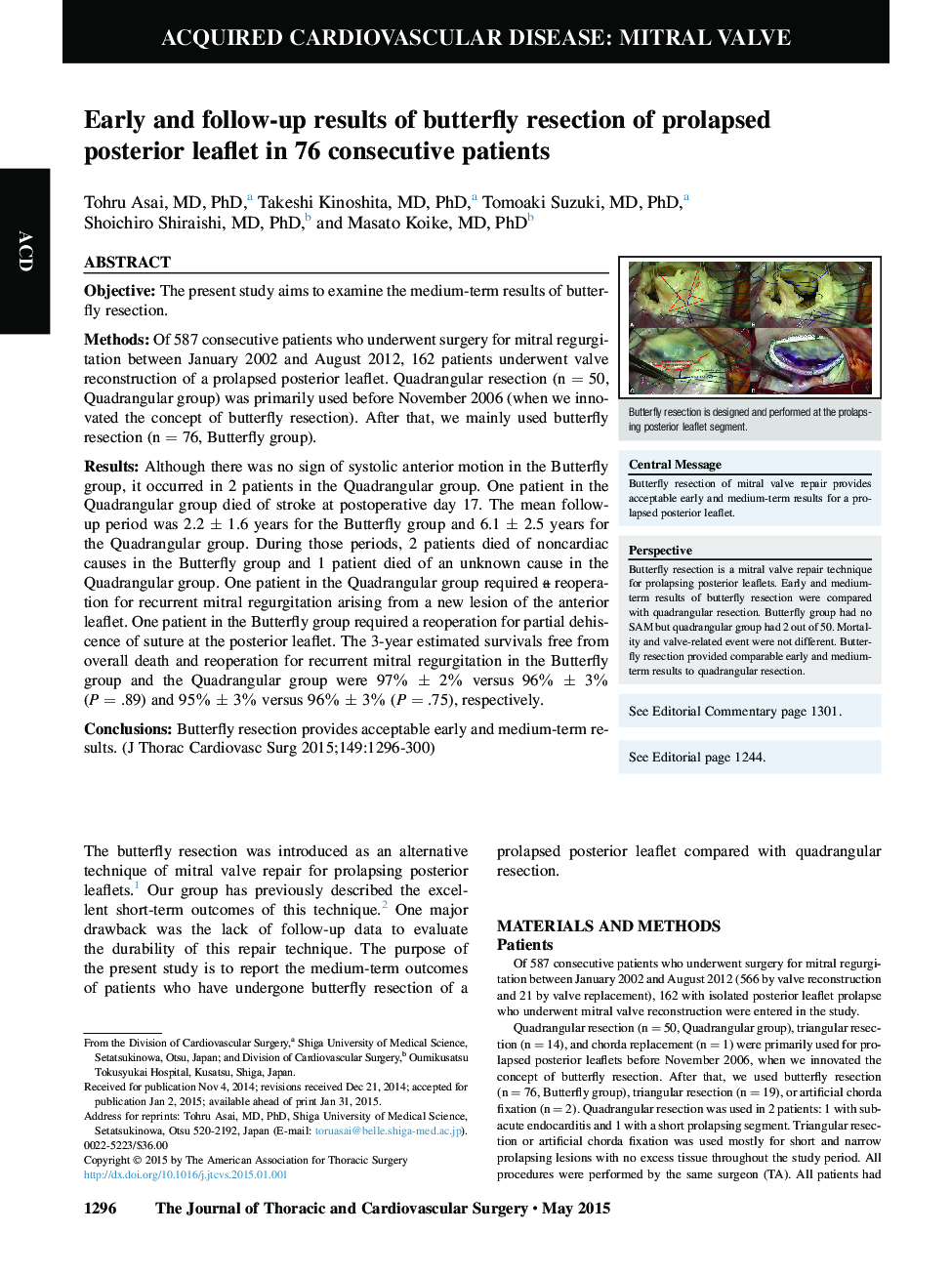| Article ID | Journal | Published Year | Pages | File Type |
|---|---|---|---|---|
| 2979561 | The Journal of Thoracic and Cardiovascular Surgery | 2015 | 5 Pages |
ObjectiveThe present study aims to examine the medium-term results of butterfly resection.MethodsOf 587 consecutive patients who underwent surgery for mitral regurgitation between January 2002 and August 2012, 162 patients underwent valve reconstruction of a prolapsed posterior leaflet. Quadrangular resection (n = 50, Quadrangular group) was primarily used before November 2006 (when we innovated the concept of butterfly resection). After that, we mainly used butterfly resection (n = 76, Butterfly group).ResultsAlthough there was no sign of systolic anterior motion in the Butterfly group, it occurred in 2 patients in the Quadrangular group. One patient in the Quadrangular group died of stroke at postoperative day 17. The mean follow-up period was 2.2 ± 1.6 years for the Butterfly group and 6.1 ± 2.5 years for the Quadrangular group. During those periods, 2 patients died of noncardiac causes in the Butterfly group and 1 patient died of an unknown cause in the Quadrangular group. One patient in the Quadrangular group required a reoperation for recurrent mitral regurgitation arising from a new lesion of the anterior leaflet. One patient in the Butterfly group required a reoperation for partial dehiscence of suture at the posterior leaflet. The 3-year estimated survivals free from overall death and reoperation for recurrent mitral regurgitation in the Butterfly group and the Quadrangular group were 97% ± 2% versus 96% ± 3% (P = .89) and 95% ± 3% versus 96% ± 3% (P = .75), respectively.ConclusionsButterfly resection provides acceptable early and medium-term results.
